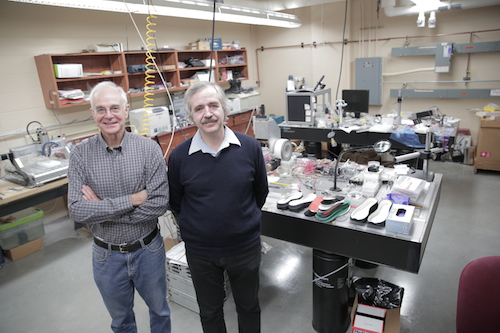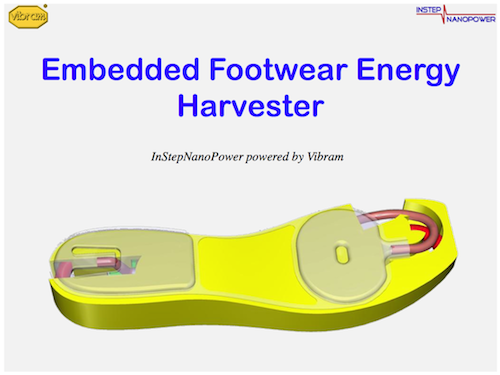Ditch the batteries: Researchers figure out how to power devices with footsteps
University of Wisconsin – Madison engineers have figured out a way to power devices by plugging them into your shoe and harnessing the power of footsteps.
The researchers have developed a new energy-harvesting technology capable of capturing the energy of human motion to power mobile electronic devices, which was built upon their previous breakthrough from 2011 called “reverse electrowetting,” a phenomenon in which The researchers’ new energy-harvesting technology takes advantage of “reverse electrowetting,” a phenomenon in which conductive liquid interacts with a proper nanofilm-coated surface and the mechanical energy is directly converted into electrical energy
Leaders of the research, Tom Krupenkin, an associate professor of mechanical engineering at UW-Madison, and J. Ashley Taylor, a senior scientist in mechanical engineering, tweaked their work from five years ago and ironed out some major issues that came along with generating power in this way.

The initial reverse electrowetting method can generate high power densities but requires an energy source with a high frequency. The researchers determined that this method of energy generation wouldn’t be enough on its own so they developed what they call the “bubbler” method.
The bubbler method combines reverse electrowetting with the fast process of bubble growth and collapse. The researchers created a bubble device which consists of two flat plates separated by a small gap that they filled with conductive liquid. The bottom plate has tiny holes through it and a dielectric-coated electrode on the surface. As pressurized gas blows through the holes on the bottom, bubbles are formed and continue to grow until they can touch the top plates, at which time the bubble collapses, pushing the conductive fluid back and forth and generating an electrical charge.
“So the high frequency that you need for efficient energy conversion isn’t coming from your mechanical energy source but instead it’s an internal property of this bubbler approach,” said Krupenkin.
The researchers say their newly discovered bubbler method could potentially generate extremely high power densities, enabling smaller and lighter energy harvesting devices that can be coupled with other energy sources.

Krupenkin and Taylor’s proof-of-concept bubbler device generated approximately 10 watts per square meter in preliminary experiments.
“The bubbler really shines at producing high power densities. For this type of mechanical energy harvesting, the bubbler has a promise to achieve by far the highest power density ever demonstrated,”said Krupenkin.
The duo has formed a start-up company called InStep and is now looking to team up with industry leaders to bring a footwear-embedded energy harvester to market.
The device would be able to directly power mobile devices via charging cable or even be integrated with a broad range of electronic devices embedded in a shoe, like a Wi-Fi hot spot that acts as a “middleman” between mobile devices and a wireless network.
“For a smartphone, just the energy cost of radio-frequency transmission back and forth between the phone and the tower is a tremendous contributor to the total drain of the battery,” said Krupenkin.
Story via University of Wisconsin – Madison.

Comments are closed, but trackbacks and pingbacks are open.